今天在家看了这篇《Metal Microchannel Lamination Using Surface Mount Adhesives for Low-Temperature Heat Exchangers》文章, 这是将表面贴装胶粘剂开发另一种用途的设想,其中使用的胶粘剂产品都是乐泰的牌号,分别是LOCTITE 3509、3615和3621,其中3509官网没有找到技术资料,后面两种都是用于SMT贴片用途的,但是很在国内市场不是特别常见。 感兴趣的朋友可以到博文末尾下载查看之!
Prawin Paulraj* & Brian K. Paul
*Corresponding author address:
7871 SW 173rd Pl.
Beaverton,OR97007
Phone: 503-550-5690
Fax: 503-627-5538
E-mail: paulraj_prawin@yahoo.com
Abstract
This paper reports the feasibility of using surface mount adhesives to produce low temperature microchannel arrays in a wide variety of metals. Sheet metal embossing and chemical etching processes have been used to produce sealing bosses that eliminate channel laminae, resulting in approximately 50% material savings over traditional methods. An assembly process using adhesive dispense and cure is outlined to produce leak-free devices. Optimal fill ratios were determined to be between 1.1 and 1.25. Bond strength investigation reveals robustness to surface conditions and a bond strength of 5.5-8.5 MPa using a 3X safety factor. Dimensional characterization reveals a two sigma (95%) post-bonded channel height tolerance under 10% after bonding. Patterning tolerance and surface roughness of the laminae faying surfaces were found to have a significant influence on the final post-bonded channel height. Leakage and burst pressure testing on several samples has established confidence that adhesive bonding can produce leak-free joints. Operating pressures up to 413 kPa have been satisfied equating to tensile pressure on bond joints of 1.9 MPa. Higher operating pressures can be accommodated by increasing the bond area of devices.
Keywords: Adhesive bonding, microchannel array, microlamination, low temperature heat exchanger.
1. Introduction
Microchannel process technology (MPT) is the use of microchannel arrays for the bulk processing of mass and energy. Although MPT devices can be on the order of meters in dimension, MPT devices include critical microchannel dimensions ranging from 100 µm to several mm [1]. One of the major advantages of MPT is the high surface area to volume ratios compared to conventional fluidic technology. These ratios allow accelerated rates of heat and mass transfer within microchannels due to shorter diffusional distances. Consequently, microchannels provide the ability to reduce the size and weight of energy and chemical systems [2]. Applications of MPT include portable heat exchange, distributed climate control, solvent separation, fuel processing, and at-home hemodialysis among others [1]; [3].
One growing area for MPT application is low-temperature thermal management, such as the cooling of consumer electronics. The improved performance and shrinking dimensions of integrated circuits have resulted in the need to dissipate ever-increasing amounts of power. Today, microprocessors require heat dissipation of 50-75W for standard applications, and well in excess of 100W for enthusiast and gamer applications. While the thermal dissipation requirements of microprocessors have steadily increased, the maximum allowable temperature of these devices has remained relatively steady around 65-85°C, limited by many factors including ergonomics and safety. Due to these limits, several researchers have shown that the theoretical maximum for air cooling of electronic components is in the range of 100 -130 W [4]; [5].
Traditional strategies for increasing heat dissipation have centered on reducing the thermal resistance of the heat sink assembly by increasing the convective surface area through finned surfaces and the use of fans to increase the convective heat transfer coefficient. However, increases in surface area are usually accompanied by increases in mass and cost. Alternatively, microchannel arrays provide a means of increasing surface area per unit mass, while increasing convective heat transfer coefficients [6].
To further reduce thermal resistance, the ideal microchannel heat sink would be made of a high thermal conductivity material. Copper has the highest thermal conductivity among engineering materials, and has been extensively used for both passive and active heat sinks including microchannel heat exchangers for the cooling of laser diode arrays [7]; [8]. Aluminum alloys offer several advantages over copper alloys as a heat exchanger material. While the thermal conductivity of aluminum is not as good as copper (though comparable), aluminum alloys are light-weight (almost 3x lighter than copper) and are lower in material cost. Aluminum also forms a very stable and tenacious oxide that is resistant to surface corrosion. For these reasons, 300X series aluminum alloys are widely used in the traditional heat exchanger industry. Aluminum microchannel heat exchangers have not been reported for application in the electronics industry. This is largely due to challenges associated with bonding of aluminum microchannel arrays.
Beyond the electronics industry, other low temperature heat exchanger applications require low thermal conductivity materials such as stainless steel. In some heat exchanger applications, such as regenerators within heat engines, low thermal conductivity metals such as stainless steel are actually desirable [9]. For a given microchannel heat exchanger, it has been shown that an optimal thermal conductivity exists that minimizes axial conductive transfer down microchannel fins without significantly penalizing conductive heat transfer across the fin in the thickness direction [10]. Maranzana et al. [10] also showed that in low-temperature (below 100°C) countercurrent microchannel heat exchanger applications, a stainless steel heat exchanger can be as much as 20% more efficient than a copper one.
In the context of low temperature heat exchange, it is desirable to find fabrication methods that can be applied to many materials. Fabrication methods used for microchannel arrays are based on microchannel lamination [1], or microlamination architectures involving the patterning, registration and bonding of thin foils of metal called laminae. Lamina patterning generally includes either surface machining, through cutting or forming processes. Once patterned, the laminae are registered relative to each other and bonded together in a stack to make a monolithic device. Typical patterning and bonding steps for microlaminated components are chemical etching and diffusion bonding. The objective of this paper is to introduce a microlamination architecture capable of meeting the requirements for low temperature heat exchanger applications across a wide variety of materials.
很久没看纯英文的学术文章,看完这篇还真花了不少时间,呵呵! 感兴趣的朋友可以下载看看:
 Metal-Microchannel-Lamination (185.5 KB, 15 次)
Metal-Microchannel-Lamination (185.5 KB, 15 次)
您没有权限下载此文件。


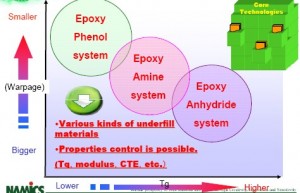
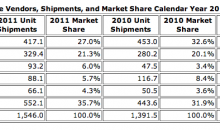
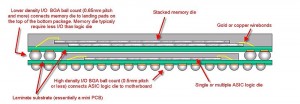
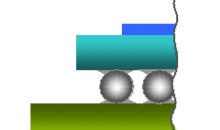

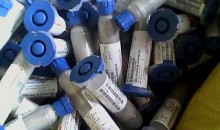
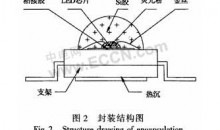

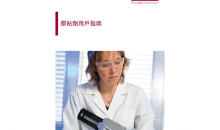
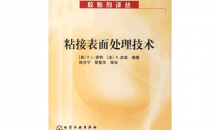
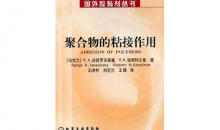

联系站长
Email:Anndiqiu#Gmail.com
Mobile Phone:13923499497
热门文章
数字
$2,242.7 Million Explore Global laminating adhesives market that is poised to be worth $2,242.7 million by 2019 了解更多 »